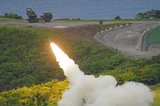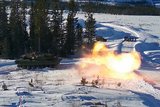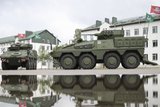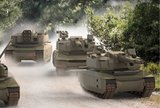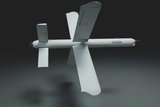QinetiQ introduces new low trajectory rocket radar
QinetiQ has developed a new radar specifically designed to provide sufficient warning against short range, low trajectory rocket attacks. Called Alarm, the multiple array receiver radar will provide rapid detection and threat assessment, offering greater protection for troops by enabling personnel to take evasive action to reduce casualties.
Unlike high trajectory rounds, short range, low trajectory rocket attacks are difficult to detect and their high velocity reduces the amount of potential warning time available. The Alarm radar has been designed to deal with this indirect fire threat to military bases.
The Alarm radar is fully automatic, requires no manning and can be set up in 2 to 3 hours. According to QinetiQ, it has proven to be effective in a series of trials against several hundred short range rockets, and the capability has been extended to cover other direct fire weapons. The training burden is small and the system exhibits a very low false alarm rate - essential for an automated system - and a very high probability of detection.
Alarm is now in high rate production, and QinetiQ has been awarded a second contract from an unnamed customer for a quantity of radars and software development, and also has plans to develop the capability further to address other key threats.
More from Land Warfare
-
Germany signs multi-billion-dollar deals for 6x6 CAVS and GDELS Eagle vehicles
The order is a further boost for the Common Armoured Vehicles System programme which has notched notable successes in the past 12 months. The first vehicle, made in Finland, will be delivered next year with local production expected to ramp up in 2027.
-
![Rheinmetall and KNDS tank tie-up narrows trans-European options]()
Rheinmetall and KNDS tank tie-up narrows trans-European options
The French and German governments signed an agreement in June 2018 to cooperate on the development of a new main battle tank under the Main Ground Combat System programme but the effort has struggled. This new agreement may damage it further.
-
![Hungary set to begin using Hero 400 loitering munitions]()
Hungary set to begin using Hero 400 loitering munitions
Developed by Israel's Uvision and with systems being sold in the thousands to multiple European NATO countries and the US, the Hero family of loitering systems is also in production in the US and Italy, the latter through Rheinmetall.
-
![Light Reconnaissance Strike – enabling a vital mission set (Studio)]()
Light Reconnaissance Strike – enabling a vital mission set (Studio)
A new system-of-systems concept will unlock digital integration of sensors and weapons for Light Forces, allowing them to shape the battlefield environment on their own terms and upgrade legacy platforms.










